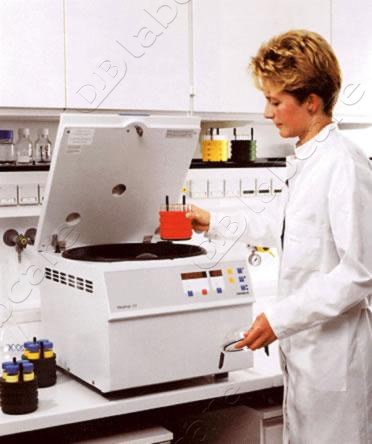Since March 2008, I'm working as a bioinformatician at the
Department of Molecular Genetics of the
Flemish Institute for Biotechnology, at the
University of Antwerp. Before I came here, I had never done any wet lab work, but dove right in, following my colleagues' efforts around the lab, and trying to participate in lab work where possible. Now, I'm confident enough to conduct my own genetic screening and sequencing experiments at work, getting the hang of some elementary genetics techniques along the way.
Learning these elementary techniques of a genetics laboratory, I'm also growing some confidence that many of these experiments should be possible to do at home, in a little laboratory built in one's garage. Doing biological experimentation at home is one of the latest fads in hacker land (see, e.g.,
DIYBio), and I don't want to miss out on such an interesting opportunity to do something completely new as a hobby project. The opportunities to do mind boggling biological projects seem endless.
As one example, it should be possible to discover and detect genetic markers in plants, for various features. One experiment could be to find markers to determine the sex of plants (e.g., Cannabis Sativa) or to discover markers for special properties of flowering plants. My father-in-law grows his own varieties of
hellebores, but it often takes 4 years before the flowering of the plant starts so he can see whether the plants have acquired new properties (e.g., he created
doubly flowering hellebores). Genetic screening of his plants may help in finding the responsible genes and determining interesting flowering features many years ahead in the lab. With techniques such as
Random Amplification of Polymorphic DNA, these marker tests could be designed at home, given that equipment for doing PCR and gel electrophoresis are at hand. Most of the steps involved in protocols for such experiments can be done safely, in a home environment, without requiring much safety procedures.
Another example of what can be done in a home laboratory is to genetically engineer microorganisms. One example could be to insert
green fluorescent protein into bacteria, as in
this YouTube video. The engineering of bacteria again opens up a whole range of possible experiments, as shown by the
International Genetically Engineered Machine competition (iGEM). Many genetic constructs are available as so-called
BioBricks, and genetic components can be clicked together and be inserted into little organisms such as harmless cultivated laboratory strains of e.g. E. coli (e.g., K12). These kinds of experiments would require my laboratory to agree with Biosafety Level 1 requirements, but this is quite doable.
So, I'm sure that there's many interesing studies that can be done in a molecular genetics lab in my garage, and I'm slowly collecting all the necessary information (protocols, safety issues, where to get cheap equipment, pricing of reagents, ...) so I can start thinking of budget friendly ways to build my own biochemical laboratory.
This will surely be a process that will take a long time, with many pauses in between, but the project is feasible, it can be done. Now I just have to do it. I hope that more details about my progress in building my own garage lab will soon appear here. Here we go! Let's haz a lab!

